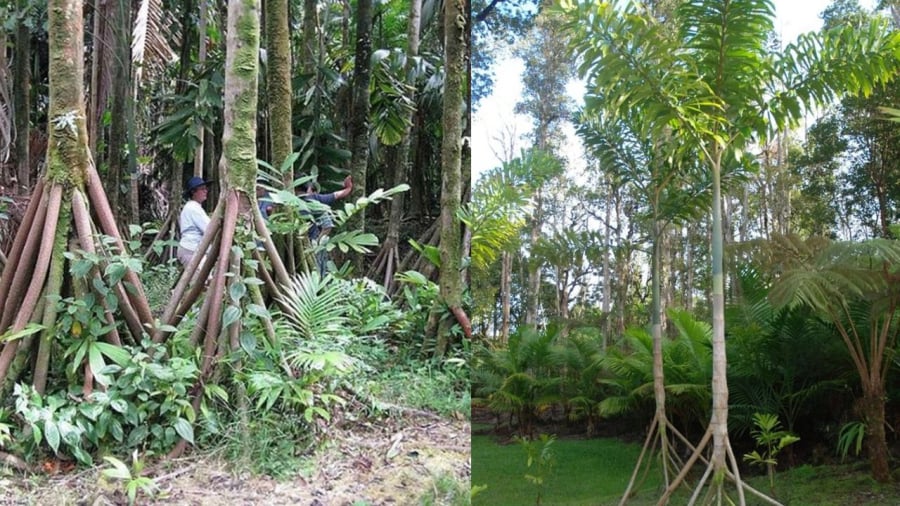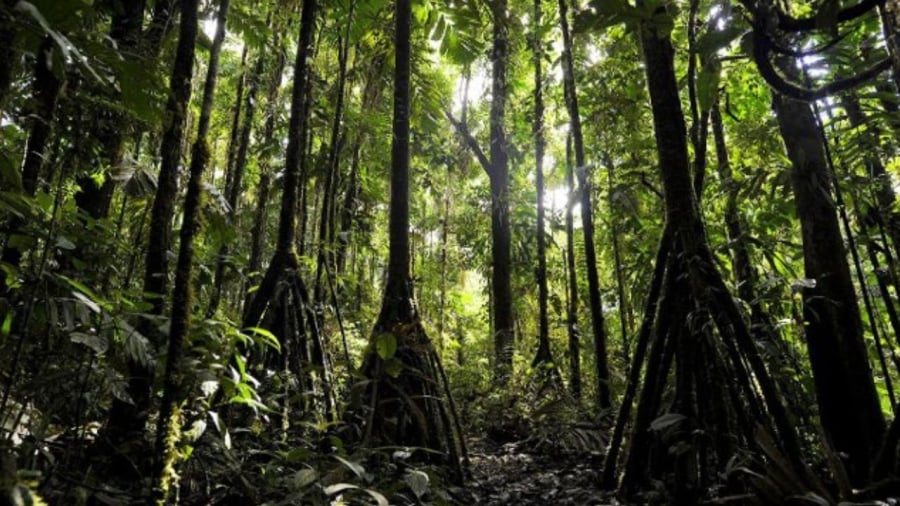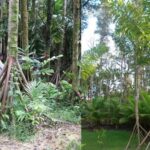The natural world never ceases to amaze, and one such wonder is the Socratea exorrhiza tree, fondly known as the “walking tree.” This unique species is predominantly found in the tropical rainforests of Central and South America, particularly in Ecuador, where scientists have witnessed a phenomenon that has sparked debate among the scientific community for years.
The Unique Characteristics of Socratea exorrhiza
Socratea exorrhiza, a palm tree species, stands out for its long and sturdy above-ground root system that penetrates deep into the soil like giant “stilts.” These roots emerge from the main trunk and grow in various directions, forming a distinctive shape reminiscent of a bundle of tentacles. This peculiar structure has led to the hypothesis that this tree might be capable of “moving.”

Local inhabitants and some researchers believe that the tree can slowly “walk” by growing new roots towards better-lit areas, while the old roots dry out and are left behind. This mechanism enables the entire tree to “shift” towards more favorable conditions, such as firmer soil or stronger light—a crucial factor for survival in the dense rainforest.
Walking Trees—Legend or Reality?
According to some scientists, including Peter Vrsansky, a paleontologist from the Institute of Geosciences (Slovakia), the phenomenon of tree migration is indeed real. During his expedition to Ecuador, Vrsansky observed Socratea exorrhiza palm trees slowly moving away from eroded land to find more stable ground. He described this process as occurring over several years, with a daily movement of 2-3 cm, amounting to an astonishing 20 meters per year for a plant.
Another hypothesis suggests that this tree “moves” as an adaptation to changing environmental conditions. When the ground beneath the tree becomes unstable due to soil subsidence, waterlogging, or lack of light, it extends its roots towards more favorable areas for growth, causing the entire tree to gradually tilt in a new direction. While the older roots decay, the new roots firmly grip the soil, resulting in a slow but steady movement.
The Debate Continues
However, not all scientists agree with the notion that Socratea exorrhiza can genuinely move. Gerardo Avalos, a Costa Rican biologist, published a study in 2005 refuting the “walking tree” hypothesis. According to Avalos, what people observe is merely the lateral growth of the root system, altering the tree’s shape over time without any actual change in its physical location.

In an interview with Live Science, Avalos stated, “This is just an exciting story fabricated by tour guides to attract tourists. In reality, the tree cannot move several meters as claimed. Even with the growth of new roots, the trunk remains in its original position.”
The contrasting studies have fueled an ongoing debate within the biological community. One side argues that the movement is an evolutionary adaptation to the environment, while the other maintains that it is merely an optical illusion without solid scientific evidence.
Despite the controversy, the Socratea exorrhiza tree plays a significant role in the tropical rainforest ecosystem. Its dense canopy and large trunk provide habitat for various animals, including monkeys, sloths, insects, and invertebrates. The leaves also serve as a plentiful food source for herbivores.
Additionally, local communities utilize this tree for multiple purposes. The leaves are used for weaving baskets, mats, and roofing, while the wood from the trunk is employed for construction and fuel. Thus, the Socratea exorrhiza holds not only biological value but also economic and cultural significance for the people of the tropical regions.
Whether or not the Socratea exorrhiza truly “walks” remains an intriguing enigma. Nonetheless, the unique characteristics of this “walking tree” have undoubtedly enriched our understanding of the natural world. The Socratea exorrhiza, with its purported ability to move, stands as a testament to the wonders of nature and the remarkable adaptability of living beings in harsh environments.


































